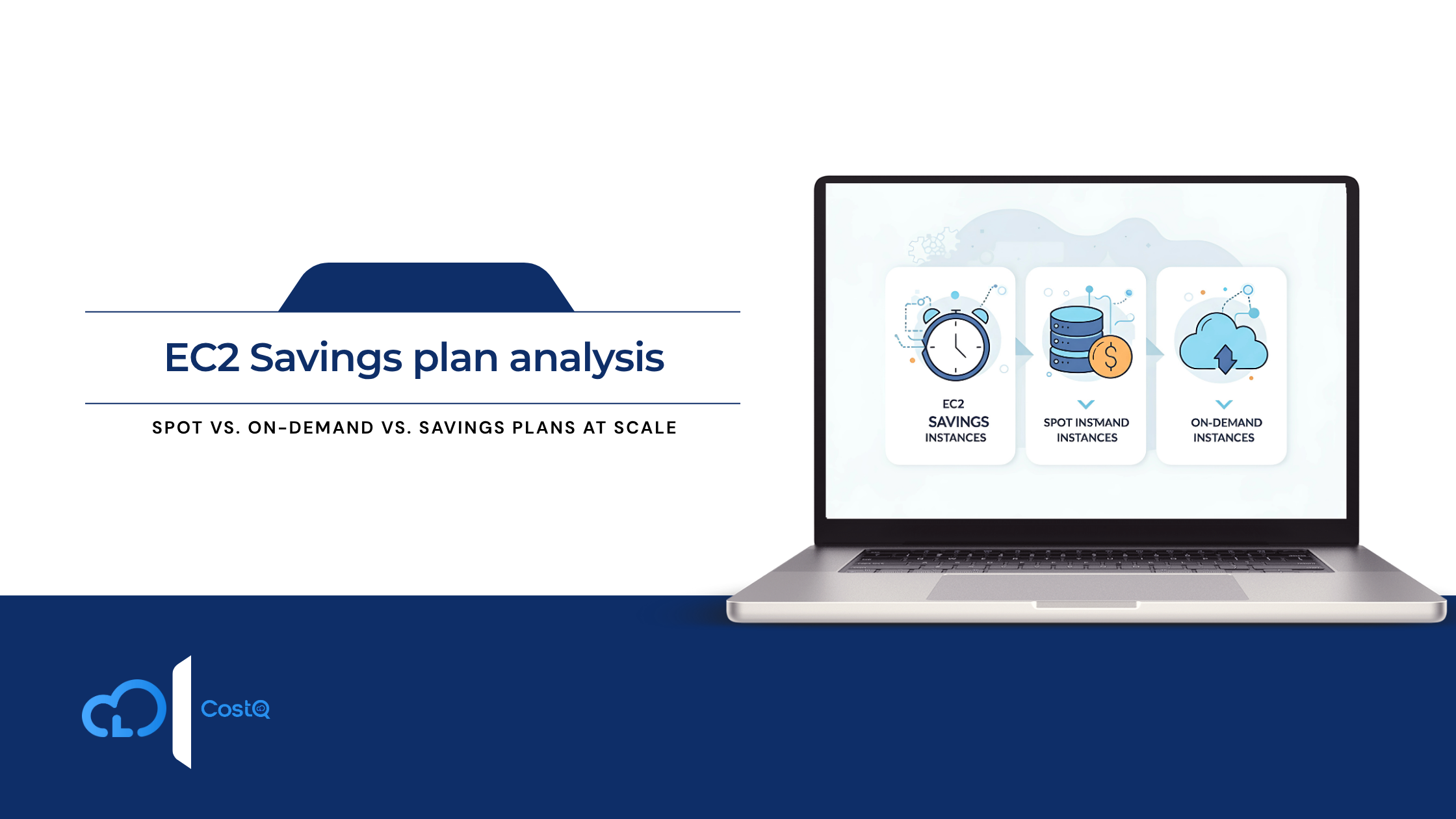Your AWS invoice arrives, and as usual, the EC2 expenditures are at the top of the list. Am I right? You are not alone. “EC2 instances constitute 60 to 80 percent of the operations cloud spending in most organizations,” and still many enterprises continue to squander money because of poor purchasing choices.
The problem is more complex than finding low-cost computing options. It is about knowing when to utilize Spot Instances with a 90% discount, when Discounted Plans offer consistent predictability, and when the premium On-Demand flexibility is worth the added cost. Making the wrong decision could incur thousands of dollars every month for your business or even worse, impact reliability harm application functionality.
This in-depth guide offers the EC2 savings plan analysis framework aimed to help organizations optimize their AWS compute costs on a large scale. We will explain the cost breakdown of Spot versus On-Demand call options, provide strategies that yield 70% cost reduction, and demonstrate how intelligent systems like CostQ.ai automate these intricate decisions.
Understanding EC2 Pricing Models
On-Demand Instances: Premium Flexibility
On-Demand instances show how EC2’s pay-per-use pricing system works – spend a dollar for every second used without buying reserves or making commitments. Their cost is often very high, but On-Demand Instances are perfect for volatile workloads requiring maximum flexibility.
Key Characteristics:
- Billing: Charged per second with a 60-second minimum for Linux/Windows
- Commitment: None required
- Availability: Instant provisioning (subject to capacity)
- Pricing: Set hourly prices by region and by instance type
Optimal Use Cases:

Cost Example:
- m5.large (us-east-1): $0.096/hour
- Monthly cost (24/7): $69.12
- Annual cost: $829.44
Spot Instances: Managed Risk with Top Savings
Unused capacity on EC2 can be accessed through Spot Instances at discounts of more than 90%. Instances are reclaimed by AWS when the need for them increases, with a few minutes’ notice of a peak in demand.
Technical Requirements:
- Architecture on the cloud has to be fault-tolerant with proper shutdown handling.
- Applications need to be stateless or have aggressive checkpointing.
- Needs containing Auto Scaling Groups which are set up to run policies with multiple instance types.
- Deployment across different availability zones for resilient interruption.
Spot Pricing Dynamics:

Advanced Spot Strategy:
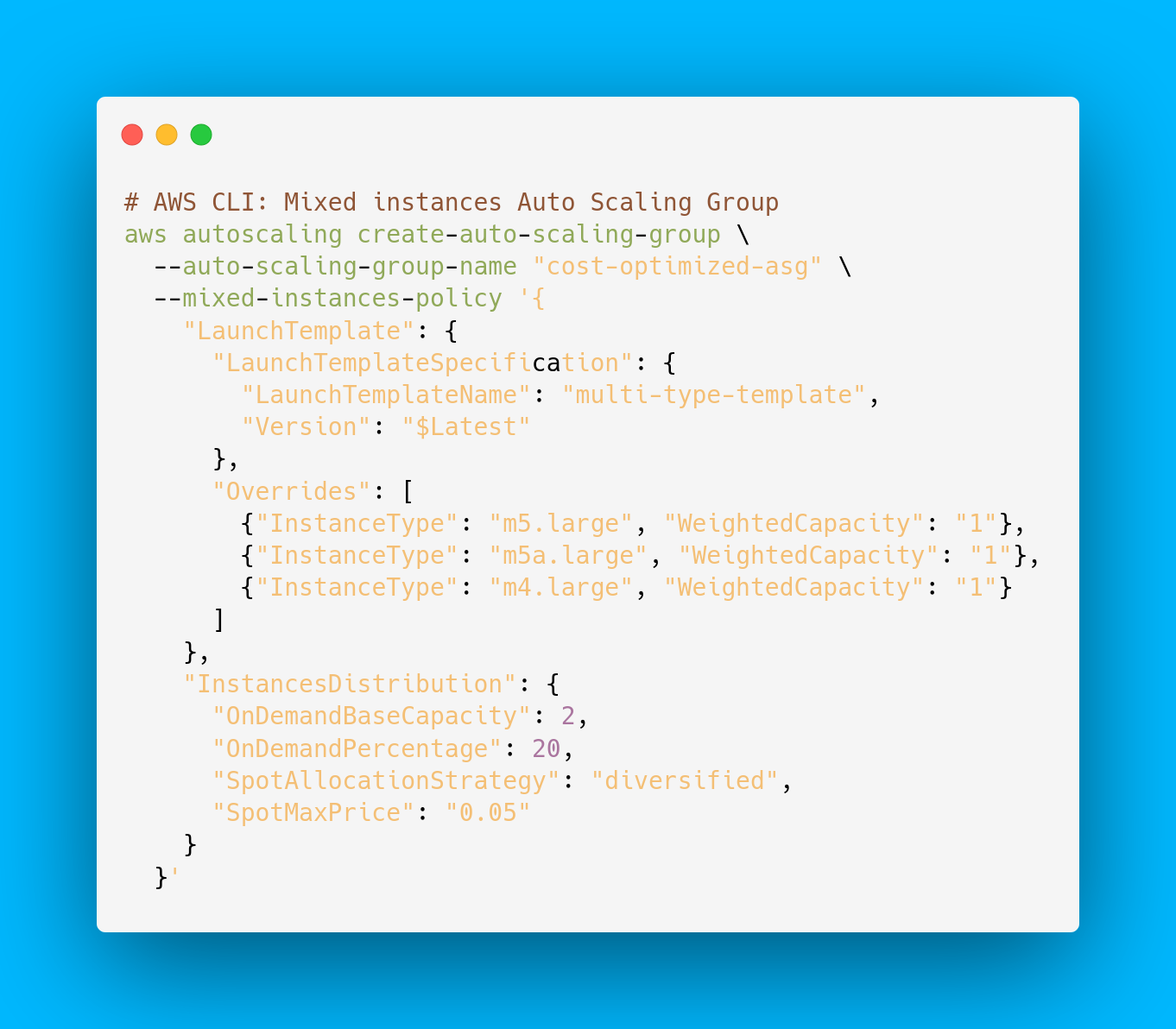
EC2 Savings Plans: Predictable Discounts
Savings Plans provide a more flexible discount method employing hourly usage commitments rather than fixed-usage instance reservations.
Plan Comparison:

Payment Impact Analysis:

Cost Comparison: Real Numbers
Scenario 1: Web Application Backend
Infrastructure: 20 m5.large instances running 24/7

Hybrid Strategy Breakdown:
- 60% Compute Savings Plan coverage: $290/month
- 30% Spot Instances: $125/month
- 10% On-Demand buffer: $111/month
- Total savings: 62% vs. On-Demand
Scenario 2: Machine Learning Training
Infrastructure: GPU-intensive p3.8xlarge instances, 50 hours/week
Weekly Usage Analysis:
- On-Demand: $12.24/hr × 50 hrs = $612/week ($31,824/year)
- Spot Instance: $3.67/hr × 50 hrs = $183.50/week ($9,542/year)
- Annual Savings: $22,282 (70% reduction)
Risk Mitigation:
- Checkpoint every 30 minutes
- Use 3+ instance types across 2+ AZs
- Maintain 10% On-Demand fallback capacity
Scenario 3: Development Environment Fleet
Challenge: 100 developers, t3.medium instances, 8 hours/day
Traditional Approach:
- On-Demand Cost:
- $0.0416/hr × 8 hrs × 22 days × 100 devs = $732/month
- Annual cost: $8,784
Optimized Approach:
- Scheduled Spot Instances:
- $0.0112/hr × 8 hrs × 22 days × 100 devs = $197/month
- Annual cost: $2,364
- Annual savings: $6,420 (73% reduction)
When to Switch Between Models
Decision Framework Matrix

Switching Triggers and Thresholds
From On-Demand to Savings Plans:
Trigger Conditions:
-
Sustained usage >70% for 90+ day.
- Predictable monthly compute spend.
- Application architecture stability.
- 12+ month usage forecast confidence
-
Expected Outcome:
-
- 40-60% cost reduction
-
From On-Demand to Spot:
-
Prerequisites:
- ✓ Fault-tolerant application design
- ✓ Graceful shutdown capabilities
- ✓ State persistence mechanisms
- ✓ Multi-AZ deployment strategy
-
Risk Assessment:
-
- Interruption tolerance: >15%
- Recovery time objective: <5 minutes
- Expected savings: 60-80%
-
Advanced Switching Logic:
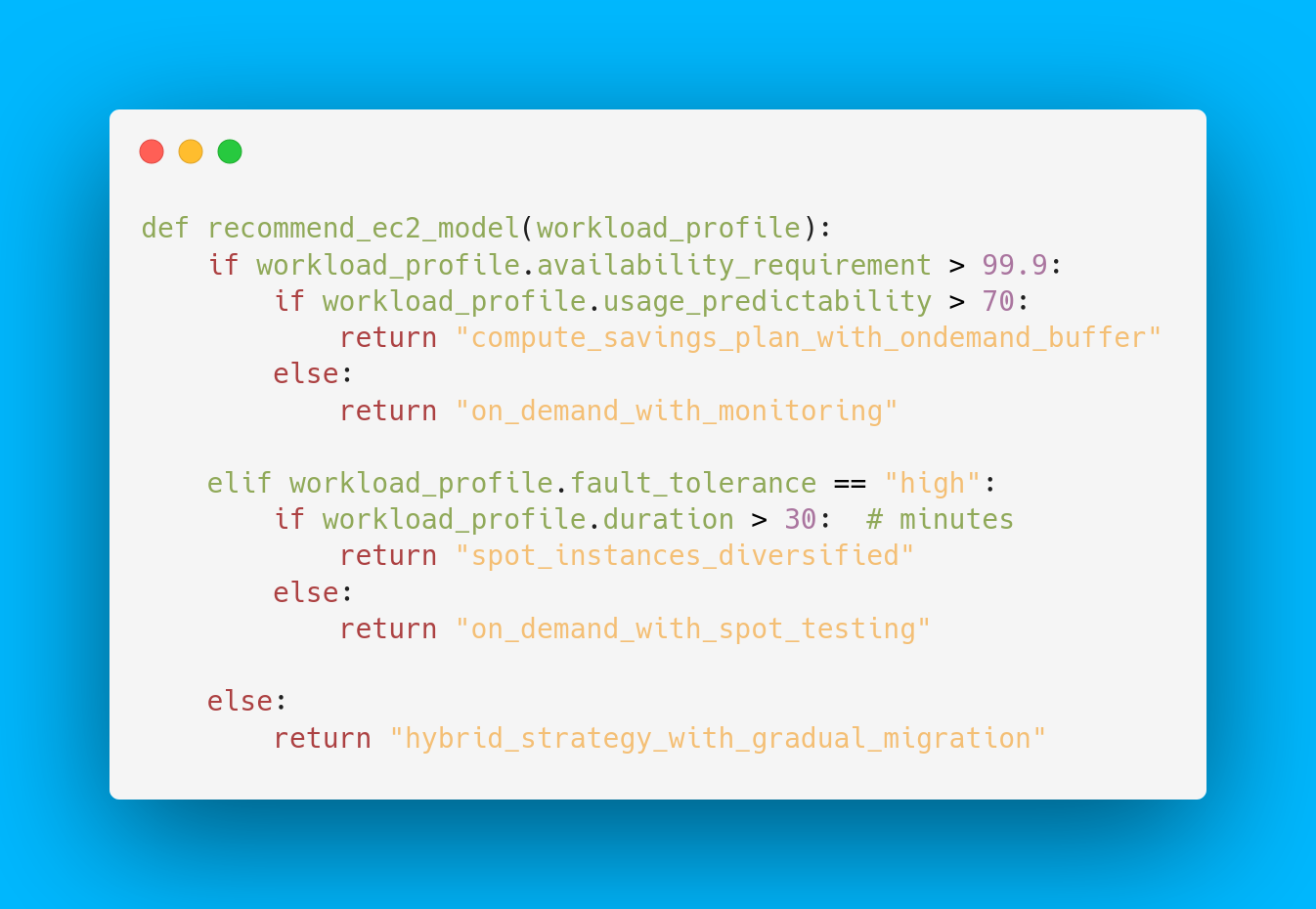
EC2 Cost Optimization of Cloud Services at Scale
Enterprise Implementation Framework
Phase 1: Assessment and Planning Period (2 to 4 Weeks)
- Analysis of Usage Trends
- Gather up to 12 months of Cloudwatch metrics.
- Determine categories of workloads and patterns of utilization.
- Establish current effective hourly rates.
- Evaluate requirements on fault tolerance and availability.
- Model Financial Implications
- Analysis on Current State:
-
- Monthly spend on EC2: $X
- Distribution by instance type
- Deployment by region
- Utilization: peak versus average activity
-
- Assess Optimization Potential:
-
- Workloads eligible for savings plan: 40-60% savings
- Candidates for spot instances: 60-80% savings
- Opportunities for rightsizing: 10-20% savings
-
- Analysis on Current State:
Phase 2: Pilot Implementation (4-6 weeks)
Target 10-15% of total compute capacity for initial optimization:

Phase 3: Full-Scale Deployment (8-12 weeks)
Systematic rollout across all eligible workloads:
-
Production Rollout Strategy:
- Week 1-2: Non-critical production workloads
- Week 3-4: Secondary production systems
- Week 5-8: Primary production with careful monitoring
- Week 9-12: Optimization and fine-tuning
-
Key Safeguards:
-
- Automated rollback procedures
- Real-time cost and performance monitoring
- Incident response protocols
- Stakeholder communication plans
-
Governance and Monitoring
Cost Allocation Strategy:
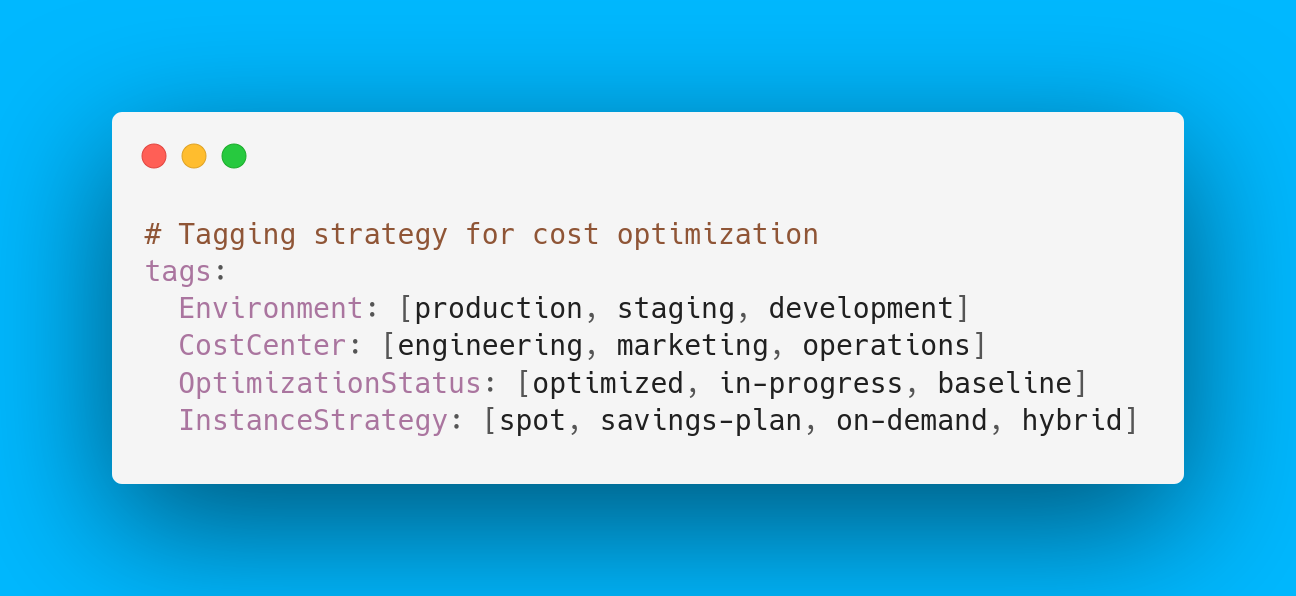
Monitoring and Alerting:
- Key Metrics Dashboard:
-
- Monthly EC2 spend vs. budget
- Spot interruption rates by workload
- Savings Plan utilization percentage
- Cost per transaction/request
- Availability SLA compliance
-
- Alert Thresholds:
-
- Spot interruption rate >15%
- Savings Plan utilization <85%
- Month-over-month cost increase >10%
- SLA breach incidents
-
Advanced Optimization Strategies
Multi-Region Cost Arbitrage
Leverage regional pricing differences for location-flexible workloads:

Implementation Strategy:
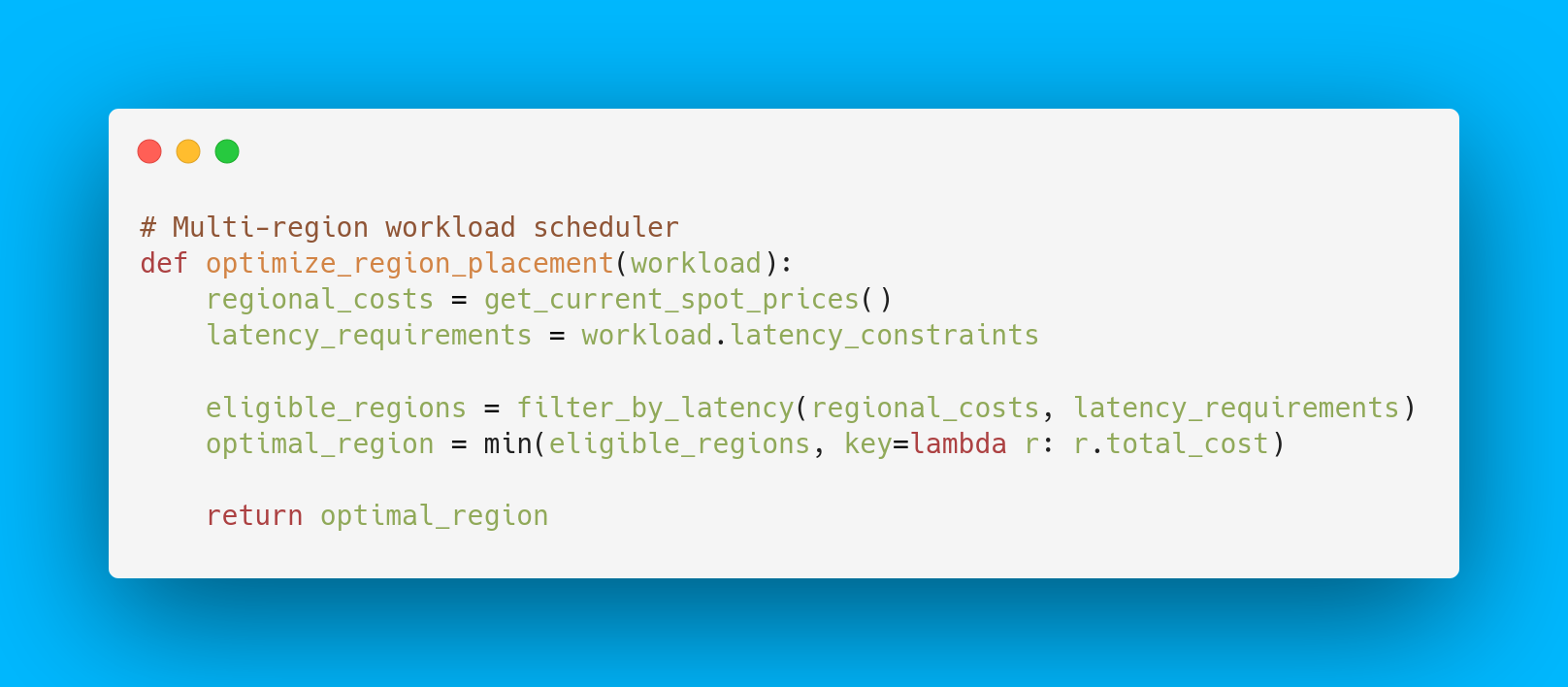
Reserved Instance to Savings Plan Migration
Migration Strategy:
- Assessment Phase: Take inventory of existing RIs and their respective utilization rates
- Gap Analysis: Identify coverage gaps, underutilization and over-commitments
- Stage Migration: Substitute Savings Plans for expiring RIs
- Optimization: Refine commitments according to usage patterns
Financial Impact:
- Example Migration:
- Current RI Portfolio: $50,000 annual commitment
- Utilization: 75% (some waste)
- Flexibility: Low (locked to specific instances)
- Current RI Portfolio: $50,000 annual commitment
- Optimized Savings Plan:
-
- Commitment: $37,500 (75% of previous)
- Utilization target: 95%
- Flexibility: High (any instance type)
- Additional savings: 15-20%
-
Container-Optimized Strategies
Kubernetes with Mixed Instance Types:

Intelligent Cost Optimization Platform
CostQ.ai transforms EC2 cost optimization from a tedious manual task into an automated, data-driven process. The platform offers continuous analysis of workloads, usage patterns, and AWS pricing, subsequently providing recommended purchases.
Key Features:
- Real-Time Monitoring of Spot Instance Prices
- Monitor spot prices across all regions and instance types. Spot price monitoring for all regions and instance types. Machine Learning predicts the likelihood of advertisement driven interruptions.
- Seamless switching of spot pools guarantees optimized pricing.
- Savings Plan Optimization
- Analyzing usage patterns predicts with 95% accuracy. Recommend optimal commitment levels and terms.
- Track utilization and suggest changes for better efficiency.
- Workload Intelligence
- Classifying applications by tolerance of faults and specific usage patterns.
- Map workloads to optimal pricing structures.
- Approval workflows enable the automation of purchasing decisions.
Primary KPIs & Success Metrics
- Financial KPIs:
- Total EC2 cost reduction percentage.
- Monthly benchmark savings, achieved vs. baseline.
- Savings plan utilization rate (target >90%).
- Return on optimization investment.
2. Operational KPIs:
- Application availability during optimization.
- Impact of Spot Instance interruption
- Mean time to recover from interruptions.
- Cost optimization automation coverage.
3. Team KPIs:
- Hours spent on manual cost optimization.
- Decrease in cost-driven incidents.
- Enhanced cost predictability and budgeting.
- Enhanced visibility into cost drivers.
Commonly Asked Questions
General Cost Efficiency
Q: Realistically what savings can I get with the cost optimization of EC2?
Most organizations achieve a 40-70% reduction in cost through some form of optimization. These are the optimized savings that can be achieved by different approaches:
- Savings Plans for adequately covered workloads: 40-60% reduction
- Spot Instances for flexible workloads: 60-80% reduction
- Rightsizing and optimization of instances: 10-30% reduction
- Strategy of Combined optimization: 50-70% overall reduction
Q: What is the minimum spend threshold where optimization becomes worthwhile?
An ROI of Optimization is witnessed at a spend of $5,000. Most advanced automation paired with dedicated optimization resources becomes cost-effective beyond $25,000.
Q: When does the ROI kicks in after implementing EC2 optimization tools?
Timelines depend on approach. These are the expected timeframes you will see results with:
- For Spot Instance savings: See results immediately (within hours of deployment)
- Benefits of Rightsizing within: 1-2 weeks
- Savings Plan discounts: From the purchase date
- Full maturity of optimization: 3-6 months for comprehensive program
Spot Instances
Q: Which workloads should NOT apply Spot Instances?
Avoid Spot Instances for:
- Primary databases that do not have clustering/replication enabled
- Real-time processing systems that operate under strict latency Service Level Agreements (SLAs)
- Single-instance applications with no redundancy (critical single point of failure)
- Regulated workloads that have specific placement restrictions
- Applications that cannot terminate gradually
- Systems sensitive to time related to finance or trading
Q: How do I lessen the impact of container-based Spot Instance interruptions?
Implement these proven strategies:
- Use 3 or more instance types in cross multi Availability Zones (AZs)
- Monitor suspension rates and stay clear from interruption-prone pools
- Ensure Replica NO, horizontally scalable stateless applications
- Deploy Auto Scaling Groups with multiple instance policies
- Set aside 10 to 20 percent of On-Demand for Back-up
Q: Can Spot Instances be effective for production workloads?
Absolutely, if proper architecture guidelines are followed. A lot of organizations, such as Netflix, Lyft, and Airbnb, rely on containerized applications using Spot Instances by:
- Establishing circuit breakers and graceful degradation
- Employing container orchestration tools such as Kubernetes or ECS for failover
- Retaining a baseline capacity through Savings Plans or On-Demand
- Regularly test obstruction scenarios
- Observing non-infrastructure metrics alongside essential application-level metrics
Savings Plans
Q: Compute vs. EC2 Instance Savings Plans, which one is ideal for me?
Pick Compute Savings Plans if:
- There’s a need for different types of instances
- There’s a need for multi-region implementations
- Architectures change over time
- The potential for business expansion is limitless
Choose EC2 Instance Savings Plans if:
- Workloads are more stable and predictable
- There’s a standard family of instanced used consistently
- Business Operations are focused on a single region
- Need maximum discount rates
Q: How do I determine optimal Savings Plan commitment levels?
This analytical framework will help you:
- Historical Analysis: Look back for more than 12 months of data.
- Sustained Usage: Determine the minimum use that is sustained
- Annual growth: Increase the baseline by 20-30% per year
- Market Risk: Hold back 20-25%
- Marginal Cost: Make use of benchmarks that require conservative commitments around 70% coverage utilization
Q: What happens if my usage falls below the Savings Plan commitments?
You are financially responsible for the total commitment amount, regardless of your assumed usage. There are marketing plans that may help alleviate the problem:
- Workload Optimization: Cut down applications to the point where commitments are spend
- Internal Allocation: Change the projects your team is working on
- Make Sale: Market off Non-Standard Reserved Instances that are no longer used.
- Conservative Plan Out: apply moderate projected coverage from 70 to 75 percent with lower commit levels
Implementation and Migration
Q: How do I migrate from Reserved Instances to Savings Plans?
Savings Plans automatically stack with existing Reserved Instances, providing additional discounts. Migration strategy:
- Current State: Let existing RIs run to expiration
- Gap Analysis: Identify uncovered usage patterns
- Gradual Transition: Purchase Savings Plans as RIs expire
- Optimization: Adjust commitment levels based on actual usage
- Flexibility Gain: Enjoy improved instance type flexibility
Q: What’s the best approach for Kubernetes workload optimization?
Kubernetes-specific optimization strategies:
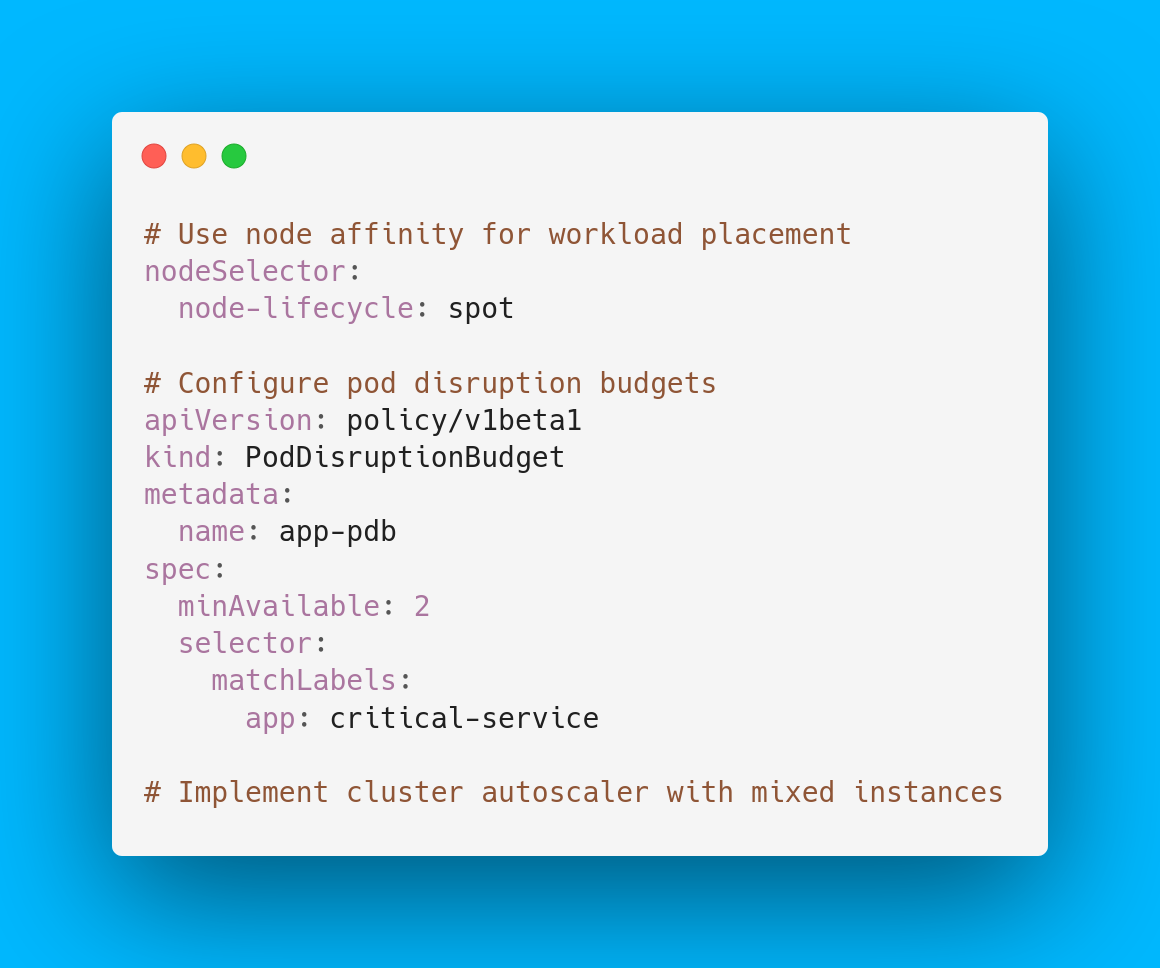
Q: How can I obtain approval from my superiors regarding the optimization of costs related to EC2 services?
Prepare powerful business case with:
- Financial Impact: Current annual spend and savings forecasted at 40 to 60 percent
- Risk Mitigation: Availability assurance strategy
- Implementation Plan: Stepwise approach cultivating defined outcomes
- ROI Timeline: Return generally seen in 3-6 months
- Competitive Advantage: Saving reinvested in product development
- Case Studies: Other benchmark participants’ success
Conclusion and Next Steps
For cloud-native companies, implementing optimization strategies is likely to deliver the greatest impact. A well-synchronized combination of Spot Instances with On-Demand capacitative Saving Plans can reduce organizational expenses by 50 – 70% without sacrificing Performance.
Core Ideas:
- Maximum possible cost reductions (60-80%) are delivered by Spot Instances for workloads deemed as fault tolerant.
- Savings Plans grant virtually guaranteed discounts (40-60%) dealt with predictable usage.
- Flexibility of unceasing demand is fulfilled by On-Demand instances.
- Hybrid approaches meld reliability with cost efficiency.
- Cost optimization powered by automated tools like CostQ.ai transcend manual intervention.
- Accomplishing set goals with cost optimization calls for an operational relentless pursuit rather than a single embark on a project.
- Organizations proficient in these principles have a sustained competitive edge available to them at considerably reduced operating costs.
Reduce your EC2 expenses with CostQ.ai.
CostQ.ai brings transformative intelligence that alleviates the need for exhaustive cost analysis. It provides advanced grade enterprise EC2 optimization through machine learning-powered insights and automated decision-making.
Why CostQ.ai:
- Cost-saving Automation:
- Optimization Monitoring of Spot Prices in All Regions Enacted in Real Time
- Emergency Protective Savings Recommendations With 95% Predictive Accuracy
- Positioning and Execution of Work Duties Based on Cost Effectiveness and Performance Criteria Demand
- Specific Policy Rules With Approval Granting Workflows
- Enterprise Level:
- Multi-account consolidated reporting: One-Stop Reporting and Optimization Space
- Enhanced regulatory and security management and compliance structure maintained
- Increased fluidity of participation with pre-existing CI/CD for other software used in the project
- Around the Clock Availability of Seasoned Experts and Strategic Counsel
- Proven incoming value results:
- Within three months 50-70% lower EC2 derived costs while maintaining system availabiility and performance metrics
- Manual optimization requirement diminishes by 95%
- Automated adherence to internal company fiscal regulations
Get Started Today
- Free Cost Assessment: Connect your AWS accounts for personalized optimization analysis and savings projections.
- Strategic Consultation: Schedule a call with our cloud cost experts to discuss your specific requirements and implementation approach.
- Risk-Free Pilot: Deploy CostQ.ai in a controlled environment to validate savings before full-scale implementation.
Transform your cloud costs from a growing expense into a competitive advantage. Join hundreds of organizations already saving millions with intelligent EC2 cost optimization.
You May Find These Blog Beautiful:
